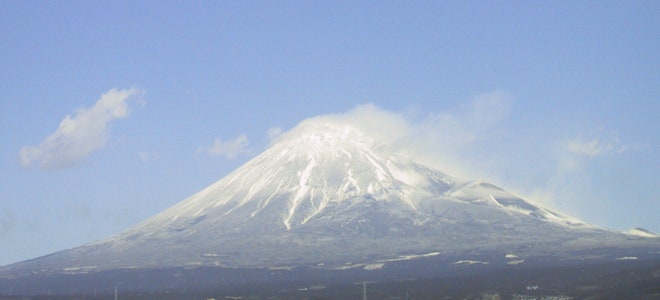It seems we've entered the DOOOOM season in the media this month. I'm not sure what triggers this cascade of apocalyptic thinking, but once it gets going, it is like a game of "telephone." What starts off as a benign report about some piece of volcanologic research ends up with the media running around like this (NSFW: language). Sure, I'm not naive enough to think this isn't about getting people to read the articles, but when it comes down to it, it does a great disservice to the science and the ability of public officials to convince people when a real danger appears. So, what has got the interwebs all worked up?
Fuji, Japan
News like this has the tendency to reappear when you least expect it, like a zombie in a horror movie. Just after the Sendai earthquake in March 2011, I had to try to dispel some rumors that Fuji was going to erupt because it "always" erupts after a very large subduction earthquake in Japan. Guess what? It doesn't. So, why do we suddenly have all this "news" claiming otherwise? Well, some well-meaning researchers in Japan claim that the Sendai (and following) earthquakes exerted pressure on the magma chamber, which will lead to an eruption. Within days, the news was "Mt. Fuji will blow due to new tectonic pressures that are higher than when the volcano last erupted more than 300 years ago. Estimates say the eruption will affect more than 400,000 people and cost over $30 billion." Now, much of the primary information on this is in Japanese, but from what I can gather, the study looked at how much additional stress any magma body under Fuji may have felt during the earthquakes. Remember, Japan is part of a subduction zone, where two tectonic plates are colliding, so overall, the stress regime is going to compression. Earthquakes can add or release stress along the subduction zone, depending on where you are along the zone and the earthquake itself can cause momentary changes in the stress field as all that energy is passed through the rocks. However, there is currently no way to directly measure the pressure in any magma body under a volcano. This is doubly so for the past - one article claimed that the pressure today was 305 times that of the last confirmed eruption in 1707. How could we possible know this? We can't just stick a probe down the throat of the volcano and say "Aha! 16 MPa!" These pressure estimates are models based on the motion caused by the Sendai and other earthquakes and the rock strength in the area by Fuji. However, that is all they are: models. Some models can accurately predict the future, but other times, we just don't know enough to say that this increase in pressure will lead to an eruption.

